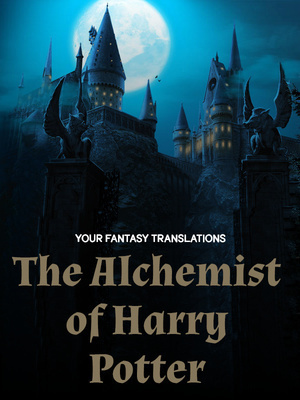Chapter 250 Underwater Bridge
It's no wonder that the German army didn't know how the Soviet T34 crossed the river.
This is exactly Shulka's preparation to be able to achieve the suddenness of the battle.
A river is a place where you can make a fuss. The Soviet army guards the river, and the river is full of mud. It doesn't look like a place where tanks can pass.
In addition, the bridge was blown up by the Soviet army again, so the German army was very relieved to build a position on the other side of the river, because they did not think that tanks could quickly cross the river, and they did not build anti-tank trenches or lay anti-tank mines.
In fact, another reason why the Germans did not build anti-tank trenches was to prepare for the next day... Tanks cannot cross the anti-tank trenches, whether it is their own tanks or the enemy's tanks, which will undoubtedly bring troubles to the next day's attack. Come a lot of trouble.
However, what the Germans didn't know was that Shulka had already asked engineers to build several underwater bridges.
Underwater bridge, as the name suggests, is a bridge under water.
The construction method is not difficult. You only need to lay steel beams and steel plates underwater, and some are even welded in sections on the shore and then submerged in the water to connect them... The advantage of being near Moscow is that there will never be a shortage of these steel materials and welders .
The difference between the underwater bridge and other bridges is that its deck is about half a meter underwater.
Nobody usually builds bridges like this, but like I said before, thinking on the battlefield is different from peacetime.
The advantage of it on the battlefield is that it is impossible to observe the different bridge from the surface, and it is even difficult to find it when you walk in front of it. Only when you step into the water do you find that there is such a thing.
After hearing about the "underwater bridge", Rokossovsky specially came to inspect it and let the tank walk back and forth on it several times.
Convinced that it is indeed feasible, Rokossovsky smiled and said to Shulka: "They should give you a medal, Comrade Shulka... You even let the tank float in the water and move forward!"
When Rokossovsky said this, Shulka felt that it really did.
But of course, this is also not the invention of Shulka. At this time, China, because there is no air supremacy to worry about the bridge being blown up by enemy planes, has already widely used this kind of underwater bridge to ensure the transportation supply line... It can make Japanese pilots unable to find to the exact location of the bridge.
Just having an underwater bridge is not enough, the Soviet army has done similar tricks on the opposite bank.
The engineers dug a layer down near the river bank, and then laid solid stones and logs to allow the tank to pass through. After that, they spread a layer of mud and perfectly joined it with the side.
So, in the eyes of the German army, it seemed that the rivers and mud that tanks could not pass through, but on the map of the Soviet army, there were roads leading directly to the front of the German positions.
In the evening, when the German army finished building fortifications after a day of fighting and planned to stop and rest, the Soviet offensive began.
As soon as Rokossovsky gave an order, the tanks drove out of the bunker one by one under the cover of the sound of gunfire and drove onto the "underwater bridge". In less than ten minutes, more than fifty T34s drove Crossed the creek and rushed towards the German positions.
If there's one downside to this offense, it's that the fighters inevitably get their boots wet when they cross the "underwater bridge."
Shuerka was also one of them. He felt a biting cold as soon as he stepped into the river, but the feeling disappeared soon, and he didn't know whether he was numb from the cold or because of the tension of the battle.
The tank rushed all the way to the enemy's trench with green smoke, and a few flares hit the enemy's direction, illuminating the panicked faces of the enemy... They obviously didn't know how to fight this battle, because they were facing almost everyone. Anti-tank weapons are ineffective T34.
T34 advanced to a range of about 100 meters from the enemy's line of defense and stopped.
Now that the battle has been fought, everyone has figured out the performance of the enemy's equipment. The T34 is almost invincible from a hundred meters away, so they will not be so stupid as to drive the tank in front of the German army so that their anti-tank guns can play a role.
Then, the tank gun adjusted its firing direction, and with a "boom", a German machine gun position was blown up into the sky.
The tank machine gun also rang out, and the bullets swept across the enemy trenches like a gust of wind, overwhelming the German soldiers.
At this time, the Soviet soldiers hid behind the tanks and fired mortar shells into the German trenches...
This is a completely disproportionate battle.
Although the German army is the defender, it should have an advantage in such local battles according to common sense.
The problem is that the cover of the German army is only trenches and sandbags, but the Soviet army is like a T34 with iron shirts and gold bell covers.
Without worrying about being destroyed by the enemy, the tank guns and machine guns of the T34 can suppress everything of the enemy without pressure, so the Soviet army quickly seized the commanding heights of the battle.
While the mortar shells blasted the German army to howl, the German tanks drove up from behind one after another.
Major Zaha Kavic originally hoped to launch an attack in the second half of the night.
Major Zakhakovic had this idea because he knew German tanks.
"The enemy's tanks can't stand the severe cold!" Major Zahakavic said: "If we attack in the second half of the night, at least half of their tanks will not be able to start! And that is when they are sleeping soundly..."
"No, Comrade Zakhakovic!" Major General Rokossovsky interrupted Major Zakhakovic without even thinking about it. He asked back: "Does our tank have a chance of winning against the enemy's tank?"
"Of course, Comrade Rokossovsky!" Major Zakhakovich replied: "They cannot penetrate our armor from a hundred meters away, but we can use them as targets!"
"So..." Major General Rokossovsky spread his hands.
Then Major Zaha Kaewicz immediately understood.
First of all, the Soviet army did not have time to launch an attack in the middle of the night... The Supreme Command requested to regain the original position before 2 o'clock in the morning the next day.
Secondly, if the enemy tank does not pose a threat to the T34, then whether it is frozen or can be activated should not be considered, because even if it can be activated and can be driven on the battlefield, it is just a "target".
Rokossovsky's judgment is correct, just like what is happening now, the enemy and our tanks are shooting each other face to face at a distance of 100 meters, which is obviously another tragic result for the German army... Tanks drive up one after another, Just one car was destroyed.
And some of those destroyed tanks exploded or were ignited, and they would become "torches" erected in front of the defense line one by one, illuminating the surrounding German defense lines and even the tanks that followed.
So, T34 adjusted its muzzle again, and fired rounds of armor-piercing projectiles mercilessly at the German tanks.
(end of this chapter)







